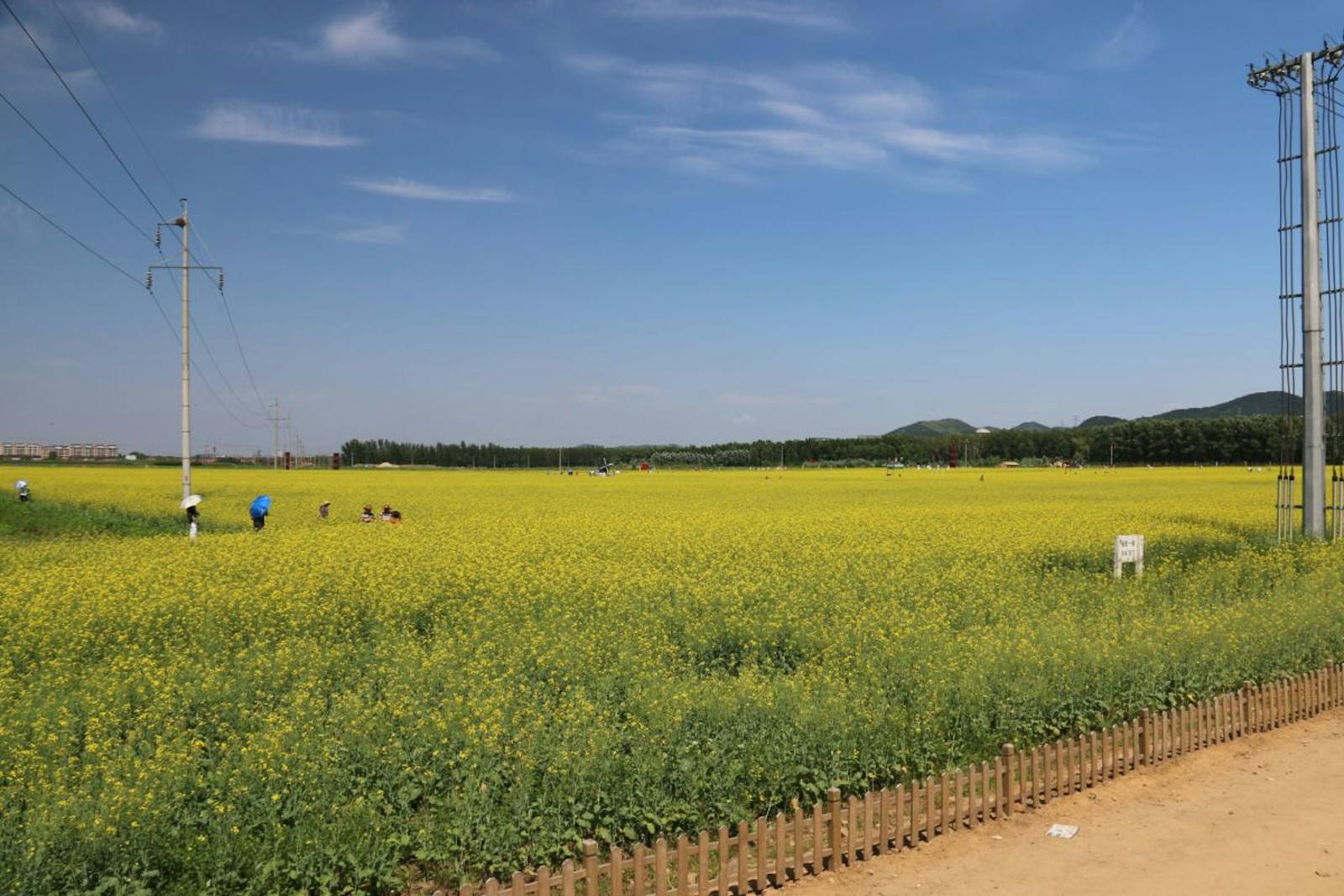Northeast China Plain Deciduous Forests
The ecoregion’s land area is provided in units of 1,000 hectares. The conservation target is the Global Safety Net (GSN1) area for the given ecoregion. The protection level indicates the percentage of the GSN goal that is currently protected on a scale of 0-10. N/A means data is not available at this time.
Bioregion: Manchuria-Ussuri Mixed Forests & Meadow Steppes (PA46)
Realm: Eastern Eurasia
Ecoregion Size (1000 ha):
23,298
Ecoregion ID:
673
Conservation Target:
8%
Protection Level:
8
States: China
Wide inland plains of northeast China once supported deciduous broadleaf forests with conifers in the surrounding hills. This ecoregion, in a part of China traditionally called Manchuria, has frigid winters and warm, rainy summers. The fertile plains region was converted to agriculture centuries ago, but the mouth of the Liao River at the Bay of Bohai still supports China’s largest reed marshes. These coastal wetlands provide critical nesting habitat for Saunders’s gull and serve as an important stopover red-crowned crane and numerous species of passage migrant shorebirds on the Siberian-Australasian flyway.

The flagship species of the Northeast China Plain Deciduous Forests ecoregion is the Saunders's gull. Image credit: Creative Commons
The Northeast China Plain deciduous forests ecoregion follows the Liao river upstream from the Bay of Bohai, crosses a low watershed divide into the broad valley of the Songhua river, and extends to the confluence of the Songhua with the Heilongjiang (Amur) River on the Russian frontier. These two rivers, the Liao and the Songhua, meander in their lower reaches and flood often, so potential vegetation is a mosaic of woodland, meadow, and seasonally inundated grasslands.
In the southern lowlands near the Bay of Bohai, deciduous broadleaf oak forest is the climax vegetation, but centuries of agriculture have reduced this formation to patches of semi-wild scrub oak. Low hills nearby, with better drained soils, support closed-canopy, deciduous forests of maple, elm, tilia, and ash. Stands of Manchurian red pine also occur.
While the plains have lost their forests, remnant patches survive in mountain areas like Yiwulu Nature Reserve (114 km2), where the land is steep and inaccessible, and Daqinggou Nature Reserve (8 km2), a forested valley with a rich assemblage of broadleaf deciduous tree taxa including Mongolian oak, Manchurian ash, maple, poplar, elm, Daurian birch and Manchurian walnut.
Northward, the China Plain narrows between the Changbai Mountains to the east and grasslands to the west. Here, and further north along the Songhua river, Mongolian oak and Daurian birch are climax forest species in drier or disturbed areas, while maple and other birch species grow in wetter locales. Thorny shrubs like Daurian buckthorn and Daurian rose comprise scrublands and understory vegetation in the drier forest areas. At about 47° N latitude, the deciduous broadleaf forest changes to a boreal mixed conifer-deciduous formation that marks the northern limit to this ecoregion.
The ecoregion is host to a range of important bird species. Saunders’s gull (IUCN Vulnerable) nests in the estuaries and tidal marshes of East Asia from Vietnam to Russia, where it forages for crustaceans and other invertebrates in the intertidal zone amongst salt-tolerant succulent plants. It is a poor swimmer by gull standards: its feet are only partially webbed and it avoids fishing offshore. Since the coastal habitat is densely populated and heavily exploited by humans, protected wetland areas are essential for survival of this species.
The endangered red-crowned crane, a symbol of luck, longevity, and fidelity to local culture, can also be found here. On the other hand, population of Eurasian otter, which was once present in the Songhua river of this ecoregion in historic times, has declined since 1950. There has been no confirmed sightings in recent decades, and more research is needed as otters in China have not received adequate attention and their conservation status is uncertain.
The Shuangtai Hekou Nature Reserve protects 800 km2 of Saunders’s Gull nesting habitat, but only about 25% is reported to be in good condition. Aquaculture, coastal development, petroleum extraction, and artisanal reed collection continue to threaten habitat within the reserve.
The western part of the ecoregion falls within the target area of the “Three North Shelterbelt” program, intended to reforest 350,000 km2 of degraded forest across Northern China by 2050. The objective is to arrest the transport of windblown sand. Ecological benefits of the program are limited, however, by the fact that plantations are often monospecific clones with low genetic diversity.
Priority conservation actions for the next decade are to: 1) manage coastal regions for the conservation of Saunders’s Gull; 2) utilize best practices of afforestation to maximum the ecosystem services provided by new forest plantations; and 3) identify and protect patches of relic forest in cultivated plains landscapes.
Citations
- Carpenter, C. 2000. Southern Asia, In China. https://www.worldwildlife.org/ecoregions/pa0430. Accesssed April 2018.
- Li, X., Xiao, D., Hu, Y. 2002. The analysis and evaluation of land use scenarios in the Liaohe River Delta wetlands. Acta Ecologica Sinica 22(2): 224-32.
- Sun, Y.M. 2017. A Health Assessment of the Ecosystem in Shuangtaihekou Wetland, in Proceedings of the International Conference on Environmental Science and Sustainable Energy (Dong Z.Y. ed.), pp. 83-



